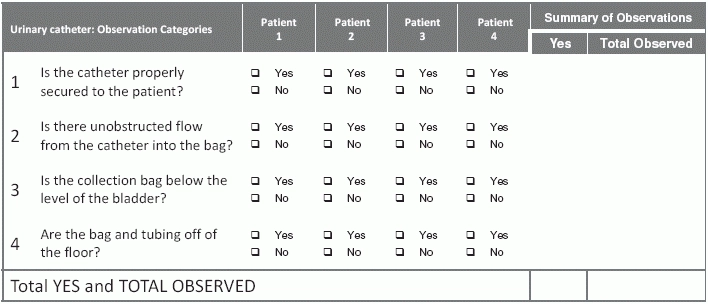Utilize These New Tools to Reduce Chance of Infection
Encourage staff members to observe their surroundings — and boost your documentation while simultaneously fighting infectious disease. With surveyors taking a closer look at antibiotic stewardship and peak cold and flu season on the way, now is a great time to evaluate your policies and practices for managing infectious disease in your facility. While various government and public health organizations have myriad suggestions for reducing risk of infection in healthcare facilities, there aren’t many suggestions that are tailored to long-term care environments specifically. However, common-sense preventative measures help, along with new “observation” tools for staff to utilize. Observe Deficiencies, Enact Fixes The Association for Professionals in Infection Control and Epidemiology (APIC) and the Centers for Disease Control and Prevention (CDC) announced the new, free, downloadable Quick Observation Tools (QUOTs) and emphasized the need and ability for healthcare professionals to react to spreading disease in real time. “The goal of the QUOTs initiative is to empower healthcare personnel, not just infection preventionists (IPs), to prevent infections in their own patient care areas,” said Ryan Fagan, MD, medical officer at the CDC, in a press release about the new tools. “These tools are designed to be completed in just a few minutes each with a simple set of observations, and should be repeated over time to track improvements.” Bonus: These tools are useful for assisting in complying with the newest Centers for Medicare and Medicaid Services (CMS) rules for antibiotic stewardship, as well. For more information on those requirements, see Compliance: Capitalize on These Tips To Ensure Antibiotic Stewardship Success in MDS Alert, Volume 15, Number 5. Incorporate Tools into Standard Documentation Protocols While the new tools aren’t specific to long-term care environments, they’re presented as centering around particular areas of healthcare facilities. Soon the tools will also be organized into suites, including a Standard Precautions Suite, which your staff or facility can access. In the meantime, your facility may find the following helpful: Resource: Check out and download each observation tool here: http://ipcobservationtools.site.apic.org/observation-tools-library/. Each tool sheet has questions or statements for staff to confirm or otherwise list their observations, as well as a place to sign off. Implementing the tools could mean figuring out how your information technology team could incorporate each tool into the documentation process in which it would be most utilized. Each worksheet is easy to use and simple to understand, which means your facility could utilize them for all staff who perform roles applicable to each area. For example, for residents with medically necessary urinary catheters, incorporating this tool into your facility’s standard documentation protocols could go a long way in ensuring resident comfort, as well as making sure there’s an even more consistent baseline for the delivery of care concerning catheters. Here’s the observation tool for urinary catheters. Each tool has a space where the staff who observed each category or device can sign off, which encourages a facility-wide care culture of comprehensive documentation as well as accountability. Making these tools electronic and part of regular documentation can go a long way in helping ensure a more consistent standard of cleanliness and care.


